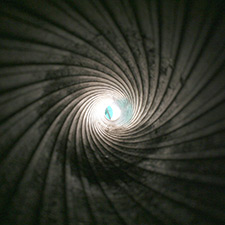- 01: Introduction
- 02: History
- 03: Propellants, Firearms, and Ammunition Development
- 04: Modern Firearms Manufacture
- 05: Small Arms Ammunition
- 06: Evidence Handling Procedures
- 07: Equipment and Instrumentation
- 08: Examination of Firearms
- 09: Cartridge and Shotshell Examination
- 10: Characterization and Evaluation of Fired Projectiles
- 11: Bullet Comparison and Identification
- 12: Gunshot Residue and Distance Determination
- 13: Toolmark Identification
- 14: Communicating Results
- Resources


Rifled Barrels
Home > Propellants, Firearms, and Ammunition Development > Evolution of Firearms > Rifled Barrels

Spiraled grooves in barrel
Spiraled grooves (rifling) are machined on the inner surface of a barrel for the purpose of spin-stabilizing the ball or bullet. This determines whether a long arm is a musket or a rifle. True muskets are smoothbore; rifling qualifies the firearm as a rifle. Early rifles were often called rifled muskets and are described in historical documents dating to 1500.
Smoothbore muskets offered ease and speed of loading whereas the rifle required more time for loading. The armies of Europe felt no need for slow loading when volley fire was ordered. These rifled arms required either special balls that were preformed to mate with the rifling in the bore or a mallet to start a conventional ball into the rifling.
Early experiments with rifled bores demonstrated that the basic round lead ball could be shot more accurately when spun. Much credit for the improvement of rifled arms is given to European immigrants to the North American colonies. German and Swiss immigrants found the arms that they brought with them were poorly suited to the American frontier. By 1700, fine-rifled arms were being made in quantity in Pennsylvania and other colonies.




